Jumping from the stratosphere
In the infinite darkness of the black sky the stars shine, they seem very close and somehow not real. I look at the altimeter - already nineteen thousand meters. At this height, the fall occurs with the greatest speed. When he reached a height of twelve thousand meters, the speed decreased, the tensioning devices of the high-rise suit weakened. I breathe freely, straighten the body and turn over face down. Falling becomes very easy. Below the Volga with its numerous tributaries. Although a sea life jacket is worn over high-altitude equipment, you do not want to swim ...
From the memoirs of E. N. Andreev on the storming of the stratosphere, November 1, 1962
The day after tomorrow, Cosmonautics Day will come, and then a probe with our server and several satellite modems on board will fly to the stratosphere. In the next article we will talk about the technical implementation of our " Cosmic Data Center ", and today we offer to recall some achievements of past years - about parachute jumps from the stratosphere.
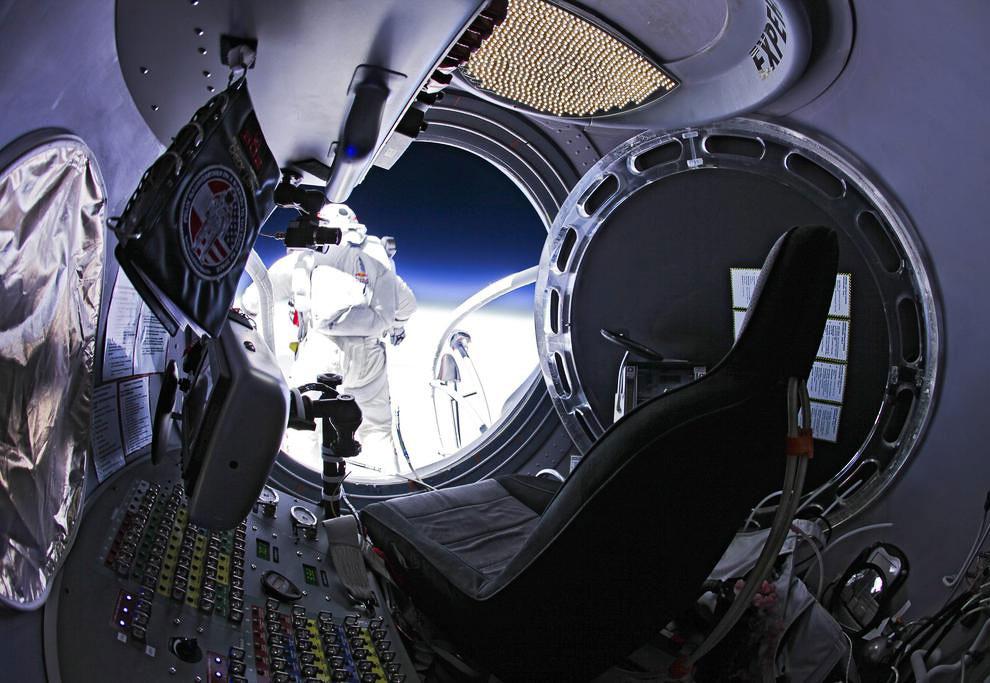
For centuries people have dreamed of flying like birds. Now, by flying in the atmosphere, no one is surprised, we are used to it. Flights have become a routine and popular entertainment. It all began with “aircrafts lighter than air” - balloons. At the beginning of our era began the story of "Chinese lanterns": light paper shells, rising into the sky thanks to the warm air from a candle tied to them. Like many other inventions, this idea was used for military purposes — to give signals to troops.
')

And only many centuries later a man rose into the air. Famous Montgolfier brothers designed a balloon on which people first flew into the air.
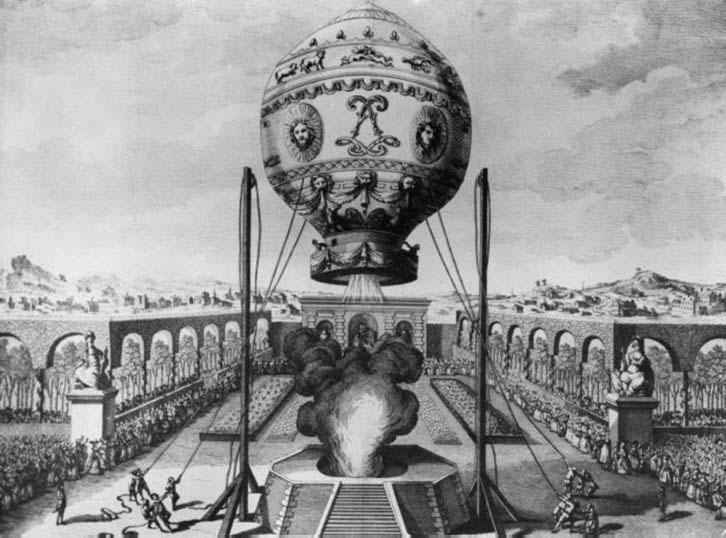
More than a century passed, “aviation is lighter than air” has evolved into a whole transport industry, and then was ousted by “vehicles heavier than air”. But the technical thought was developing, and the desire to step over the limits and rise even higher led to the development of stratton navigation — flights on stratostatos to such heights, where not all airplanes could climb. There are tragedies and triumphs in the history of strattonia as well as in aviation and astronautics, they have their own milestones.
In the Age of Enlightenment, it was believed that above 12 kilometers the atmosphere ends and airless space begins. Modern science distinguishes in the structure of the atmosphere a multitude of layers, different in physical properties and composition. The stratosphere is the range of heights from 11 to 50 km. Devices "lighter than air", rising in this layer are called stratostatos.
Scientists Auguste Piccard and Paul Kipfer became the first "Stratospheric Spheres". In 1930, Pikkar constructed the first-ever stratostat called FNRS-1, which is an abbreviation of the “National Foundation for Scientific Research” (Fonds National de la Recherche Scientifique). Together with Kipfer, Picard rose to 15.7 km in 1931.
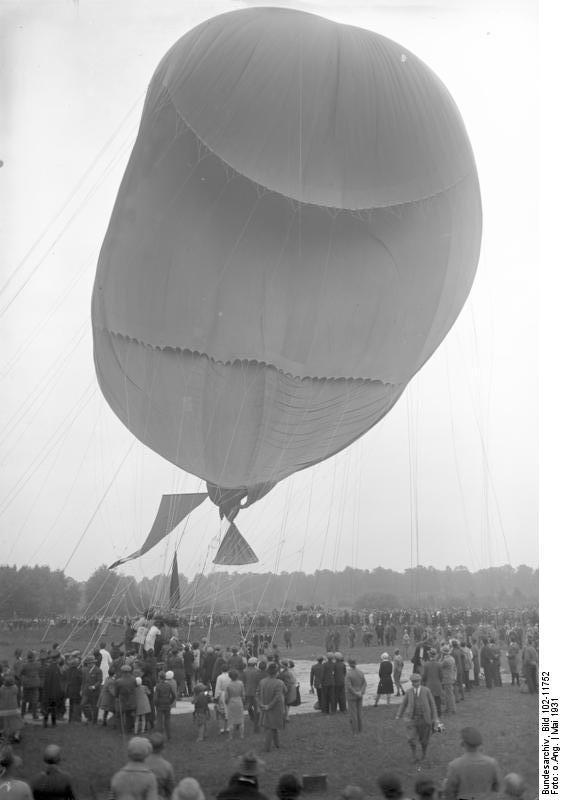
During its long and rich life, the Belgian made 27 flights on stratostatos, invented a bathyscaphe and plunged into the Mariana Trench to a depth of almost 11 km.
After the FNRS-1, flights to unprecedented heights were also interested in the USSR. The tense international situation made one think about high-altitude military aviation, inaccessible to fighters of that time and anti-aircraft guns. In addition, we wanted to explore the newly discovered cosmic rays - naturally ionizing radiation coming to Earth from space. The data that were obtained using unmanned stratostats was not enough, and on September 30, 1933, the first Soviet manned stratostat — the USSR-1 — took off. He climbed to a record height of 19 km.
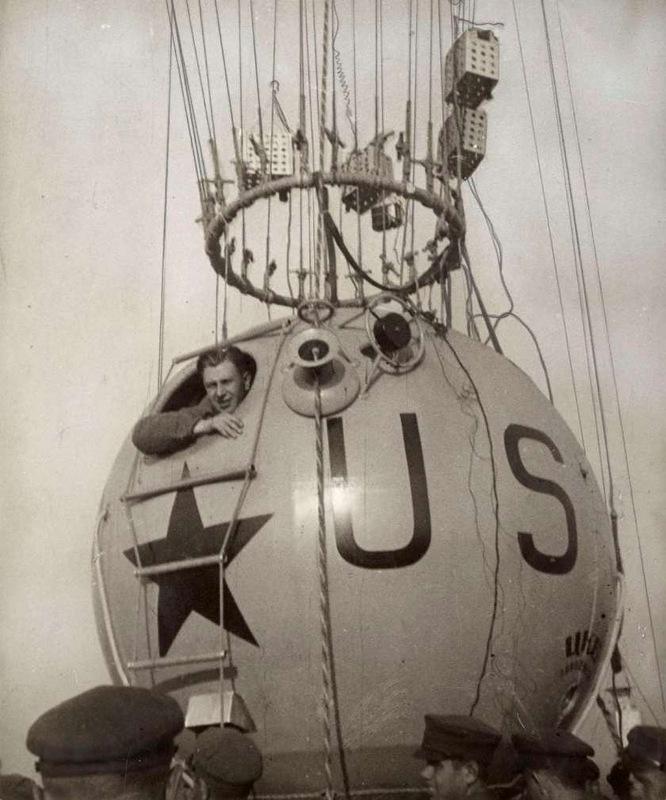
Soldiers play the role of ballast:
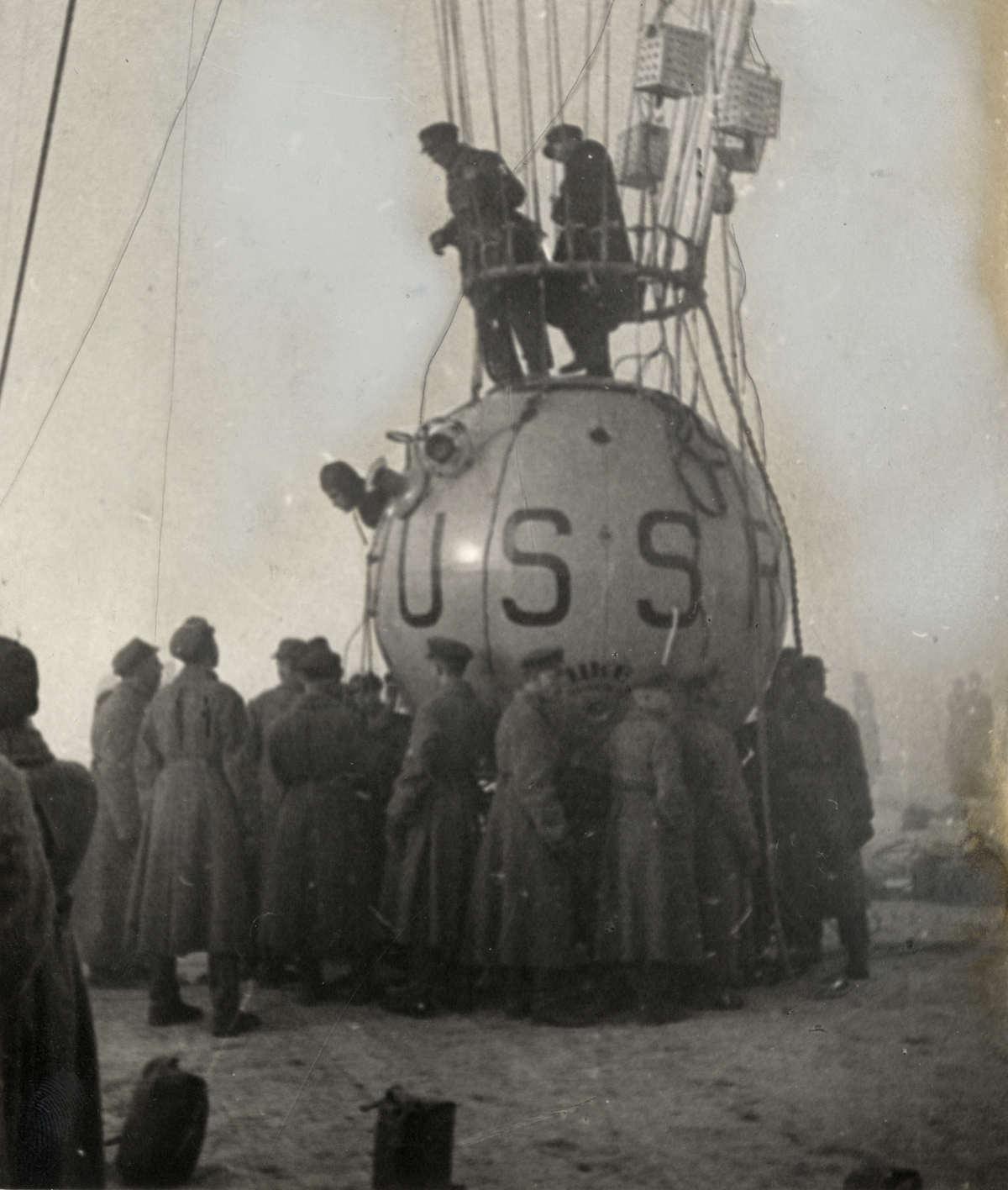
The heroes who piloted it were three pilots: Ernst Birnbaum, Konstantin Godunov and Georgy Prokofiev. Godunov worked as the head of the design bureau that created the stratostat shell, while Birnbaum and Prokofiev served in the Red Army and were experienced aerostat pilots. Ernst continued to fly later, and during World War II he commanded the balloons of Moscow. The fate of George was tragic, he committed suicide at the age of 36.
The next Soviet experiment, the “Osoaviakhim-1” stratostat, was named after the public organization of the Society for the Promotion of Defense, Aviation and Chemical Construction, which several engineers developed the device.
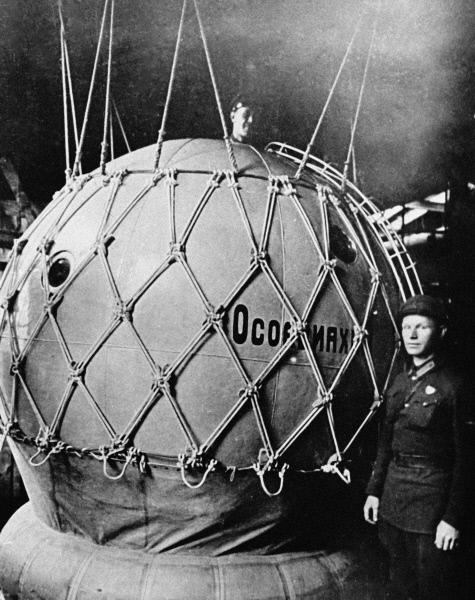
Traditionally, one of the pilots of the stratostat was its chief designer, engineer Andrei Vasenko. The team had an ambitious scientific program, led by Academician Abram Ioffe. In flight, they planned to explore cosmic rays, to study the composition of the atmosphere and the magnetic field of the Earth. In addition, they decided to put on a biological experiment on board and manned the fruit flies with a “crew” of flies. The co-pilot, physicist Ilya Usyskin, a graduate of the Leningrad Polytechnic University, was in charge of scientific experiments on board. The commander of the crew was military pilot Pavel Fedoseenko, who had many years of experience flying in balloons, commanded the aeronautic detachment during the Civil War and graduated from the dirigible department of the Air Force Academy. "Osoaviakhim-1" set a world record, reaching a height of 22 km above sea level, but the flight ended in tragedy: the crew strained too much gas from the cylinder, and when it began to dusk, the remaining gas cooled, the stratostat began to decline rapidly, and at an altitude of 2 km came off from the balloon and crashed.
Another, relatively successful experiment was the stratostat "USSR-1-bis."
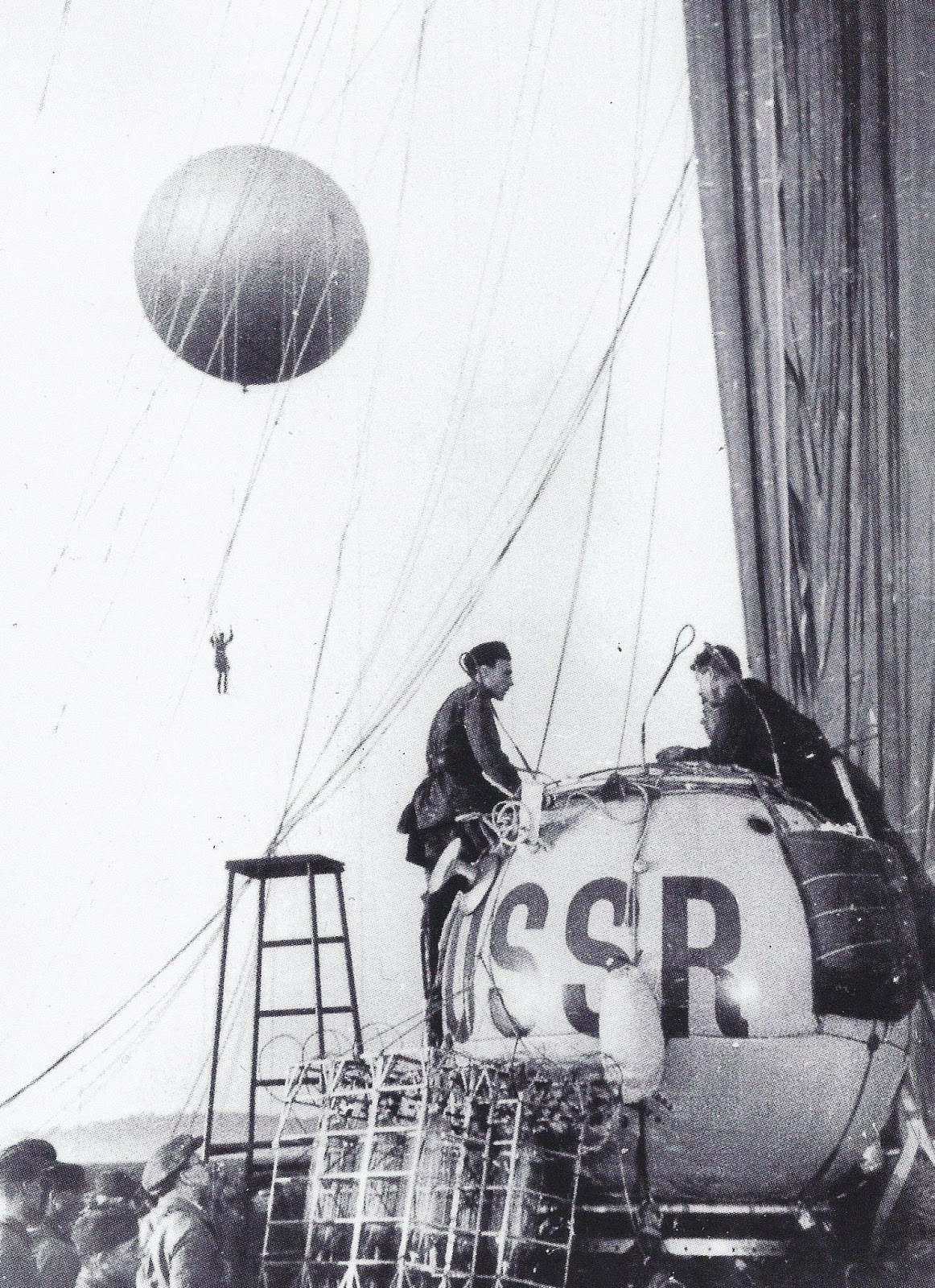
The crew commander was Kristap Zille, an experienced aeronautical military pilot, and chief of staff of the 4th Air Division. The co-pilot was military engineer Yury Prilutsky, and Alexander Verigo, a professor at the State Geophysical Observatory, was to do the research. It was not for nothing that the Stratostat was called the USSR-1-bis: the envelope of the balloon and the gondola were like the first Soviet stratostat, but it was also equipped with a rescue parachute. The scientific program promised to be rich, among the equipment were astronomical instruments: a spectrograph and a device for studying the brightness of the sky; equipment for aerial photography; Hesse electrometers, two Wilson cameras, thermometers, a barometer and two altimeters. Outside the gondola hung vessels for sampling air and many other devices. Although a tragedy like “Osoaviakhim-1” was avoided, it is impossible to call a fully successful mission. Having risen to a height of 16 kilometers, the crew carried out the scientific program and began to decline, but the speed was too high, there was a leak of hydrogen, the discharge of ballast did not improve the situation. The pilots decided not to use the parachute of the gondola, because the landing with it would have turned out too rigid and the scientific equipment could not withstand. Instead, they decided to ease the gondola by jumping out of it with parachutes themselves. At the height of 3.5 kilometers, Verigo jumped out, then, at an altitude of 2 kilometers, Prilutsky. Silla is left alone; dropping all the remaining ballast, he brought the rate of decline to an acceptable. However, deciding to play it safe, before landing, he got out of the gondola, clinging to the ladder on its outer side. But the precaution was unnecessary, the stratostatus made a soft landing, scientific instruments and the remaining pilot were not injured.
All subsequent Soviet experiments ended unsuccessfully and even tragically.
In the summer of 1934, the USSR-2 was burned at the start, fortunately, no one was hurt.
The USSR-3 stratostat did not fulfill its mission. His crew included Colonel Prokofiev, brigade engineer Semenov and military engineer of the 2nd rank Prilutsky. Prokofiev was originally the commander of the Experimental Aeronautical Test Division, but was removed from his post after the accident at the test site. The launch was transferred many times, as a result the stratostat took off in the autumn of 1937, but the balloon broke at a height of less than a kilometer. The gondola fell, the crew was seriously injured, after which the pilots recovered in the hospital for several months.
In the summer of 1938, due to the failure of the life-support system, the crew of the BBA-1 stratospheric observatory, named after the Zhukovsky Air Force Academy, died. When landing, with the crew already dead, the stratostat fell on a high-voltage power line and caught fire.
In the summer of 1940, immediately after the start, Osoaviachim-2 collapsed. The height was quite small and the pilots escaped with bruises.
After such a series of failures, the idea of stratton navigation was finally discredited in the eyes of the leadership of the USSR and the experiments were stopped for a long time. The new period of the construction of Soviet stratostats began many years later, with the beginning of the cosmic era, to develop new technologies. The stratostat “Volga” was launched in 1962 to test the landing of the spacecraft descent vehicle, jump from it and ejection.

The crew consisted of two test-parachutists. The stratostat rose to a height of 28.6 kilometers, Yevgeny Andreev catapulted and landed successfully, and Peter Dolgov jumped out with a parachute, but died due to the depressurization of the spacesuit.
Overseas, too, did not stay away from the conquest of the stratosphere.
In the years 1933-1934, Jean Picard, Auguste Picard's twin brother, who lived in the United States, built the stratostat "Century of Progress". In the first flight, he climbed to a height of 17.5 kilometers. Curiously, the sponsor of the flight was Henry Ford himself. In the second flight, Jean took his wife Jeannette Ridlon, who became the first female stronghold. In the summer of 1934, scientists Orville Anderson, Albert Stevens and William Kepner took off on the stratostatus of Explorer I. At an altitude of 18 kilometers, the shell broke and the crew jumped out with parachutes, all landed safely.
The following year, the same Anderson and Stevens soared on the stratostat Explorer II. The flight was successful, they set a record height of 22,066 meters, which lasted more than 20 years.
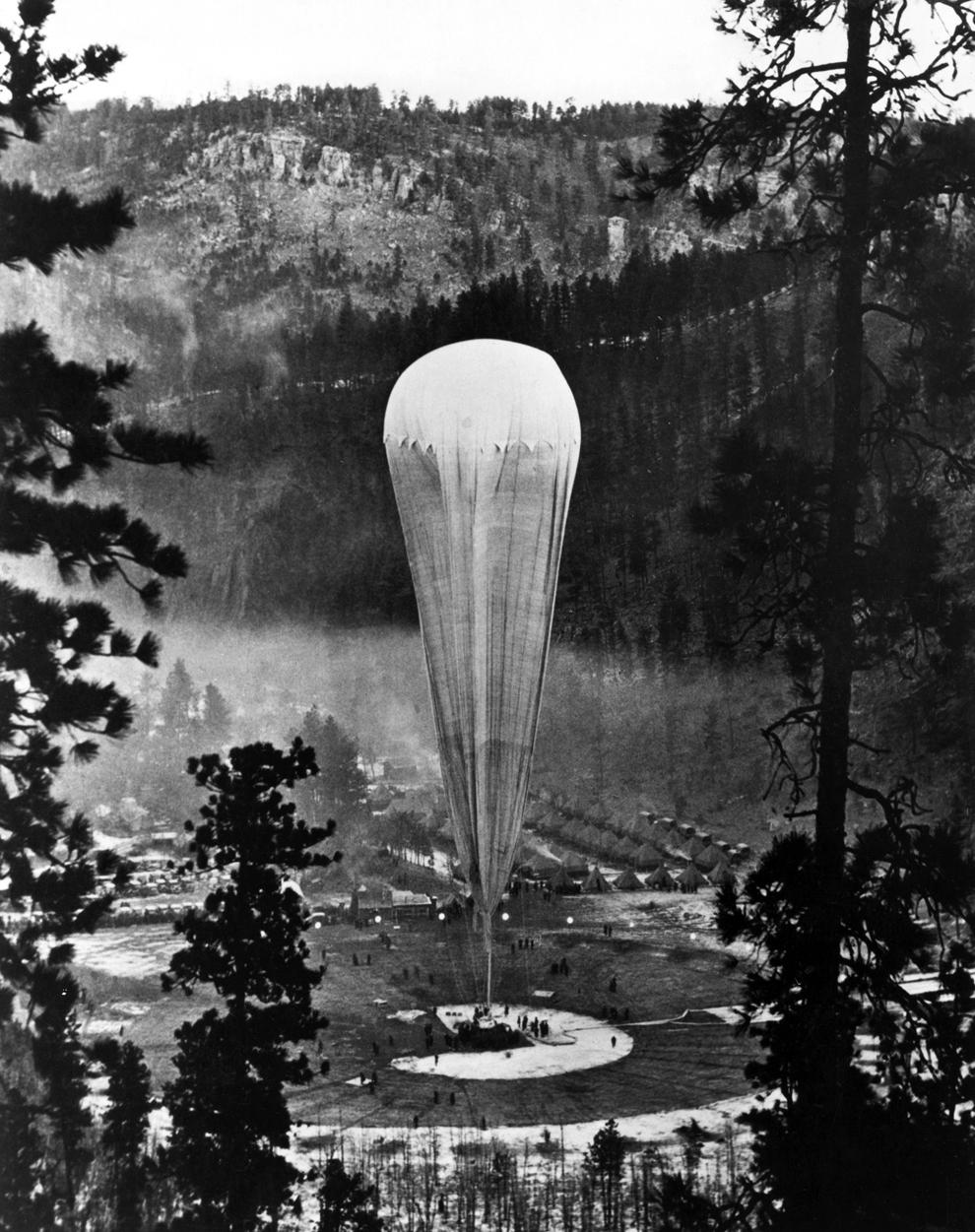
Then the Americans took a big pause, and the next flights were already tests of space technology, as in the USSR, and they were conducted not by enthusiasts with private sponsors, but by the US Air Force. From 1955 to 1958, the Man High project acted within which they tested work in the stratosphere of life support systems, studied the crew’s well-being under conditions close to cosmic, found out the effect of cosmic rays on humans, and tested landing systems with ejection. During testing, three stratostats were launched: Man High I, Man High II and Man High III. The first pilot was Joseph Kittinger, and he immediately set a record height of nearly 30 kilometers. The second stratostat with pilot David Simons rose even higher: 30,942 meters. The third stratostatus was piloted by Clifton McClure. Very many developments of this program, then were introduced on the spacecraft of the program "Mercury".

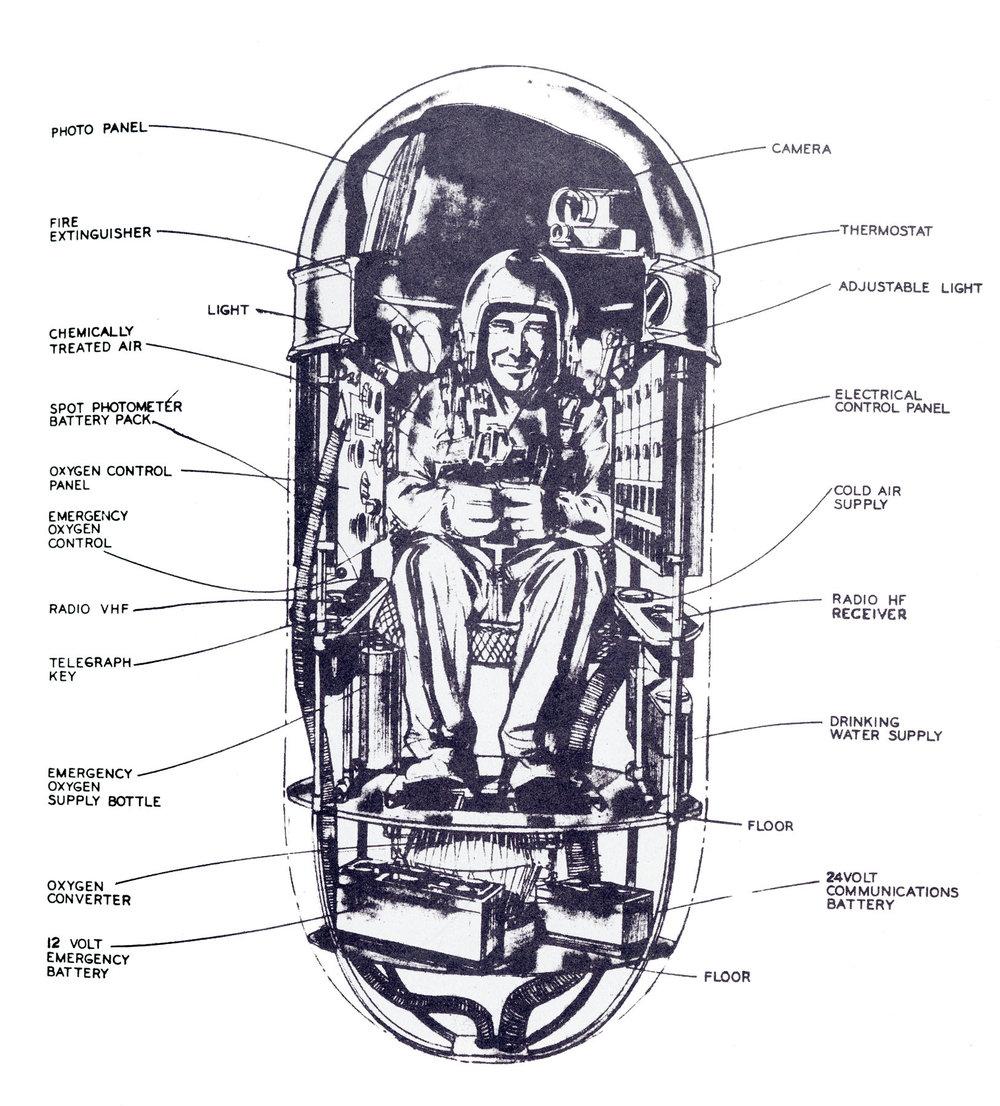
In addition to traditional stratostats with hermetic gondolas, in the late 1950s, Americans conducted extremely risky flights in open cockpits, testing the spacesuits of pilots of planes and astronauts, as well as practicing high-altitude parachute jumps. The tests were carried out in the framework of Excelsior projects in which the aforementioned Joseph Kittinger participated.
Kittinger completed three jumps, almost dying in the first of them. In the autumn of 1959, rising to a height of 23,300 meters, he jumped out of the gondola, but a malfunction of the stabilizing parachute led him into a wild tailspin with a rotational speed of 2 turns per second and overloads up to 22g. The pilot lost consciousness and survived only thanks to an automatic system that opened the emergency parachute. The second jump was from a height of 22,760 meters. During the third jump of 1960, a slight depressurization of the spacesuit occurred and Kittinger injured his hand, but he set a whole set of records: height — 31,300 meters; a fall speed of 988 km / h and a fall time of 4 minutes 36 seconds.

In parallel with the purely military trials of Man High and Excelsior, there were also scientific flights under the Strato Lab program. The main tasks were astronomical observations and studies of cosmic rays. From 1956 to 1961, 9 flights were made at altitudes from 12,000 meters to a record at that time of 34,668 meters. In one of the flights, the pilot Alfred Michex for the first time conducted astronomical observations with a telescope fixed in the ONR STRATOLAB stratospheric gondola at an altitude of 12 kilometers. The next telescope, which flew in the gondola of the device STRATOLAB HIGH IV to explore Mars, rose to a height of 24,689 meters.

This record of high-altitude observation through a telescope was broken only by the orbital Hubble.
One of the scientific flights on the Stargazer program carried out all the same Joseph Kittinger. In the winter of 1962, he and the astronomer William White climbed to a height of 19 kilometers and made astronomical observations for more than 15 hours.
Half a century passed and unique research turned into entertainment and advertising. In 2010, Red Bull sponsored an ambitious project to prolong the leap from the stratosphere as an advertising campaign for its brand.
For the project, they chose the famous extremal athlete Felix Baumgartner, an Austrian sky-skater and a basejamper who had worked with the company for many years.
After two training jumps (from heights of 21,818 and 29,610 meters), on October 14, 2012, Baumgartner rose to a height that became another record of manned flights on a stratostatus - 39 kilometers. In addition, he set several more records during the jump: the speed of free fall is higher than the speed of sound - 1357.6 kilometers per hour, and the longest distance that a person flew in free flight is 36,402.6 meters. The jump video was broadcast live and was watched by 8 million viewers.
The second entertaining jump was not long in coming. Alan Eustace, vice president of Google, October 24, 2014 jumped from an even greater height of 41,419 meters. Unlike all previous flights, the designers decided to do without the gondola and fasten the spacesuit directly to the cylinder, and at the maximum height to shoot it with a squib. This gave great savings in weight and allowed to rise higher.
Judging by the fact that other jumps are not planned yet, the thoughts of rich exotic lovers are occupied with even more unusual entertainment - suborbital flights, which some companies plan to offer in the near future.
On April 12, we invite you to take part in our experiment and send a congratulatory message to the server in the stratosphere.
From the memoirs of E. N. Andreev on the storming of the stratosphere, November 1, 1962
The day after tomorrow, Cosmonautics Day will come, and then a probe with our server and several satellite modems on board will fly to the stratosphere. In the next article we will talk about the technical implementation of our " Cosmic Data Center ", and today we offer to recall some achievements of past years - about parachute jumps from the stratosphere.

For centuries people have dreamed of flying like birds. Now, by flying in the atmosphere, no one is surprised, we are used to it. Flights have become a routine and popular entertainment. It all began with “aircrafts lighter than air” - balloons. At the beginning of our era began the story of "Chinese lanterns": light paper shells, rising into the sky thanks to the warm air from a candle tied to them. Like many other inventions, this idea was used for military purposes — to give signals to troops.
')

And only many centuries later a man rose into the air. Famous Montgolfier brothers designed a balloon on which people first flew into the air.

More than a century passed, “aviation is lighter than air” has evolved into a whole transport industry, and then was ousted by “vehicles heavier than air”. But the technical thought was developing, and the desire to step over the limits and rise even higher led to the development of stratton navigation — flights on stratostatos to such heights, where not all airplanes could climb. There are tragedies and triumphs in the history of strattonia as well as in aviation and astronautics, they have their own milestones.
In the Age of Enlightenment, it was believed that above 12 kilometers the atmosphere ends and airless space begins. Modern science distinguishes in the structure of the atmosphere a multitude of layers, different in physical properties and composition. The stratosphere is the range of heights from 11 to 50 km. Devices "lighter than air", rising in this layer are called stratostatos.
Scientists Auguste Piccard and Paul Kipfer became the first "Stratospheric Spheres". In 1930, Pikkar constructed the first-ever stratostat called FNRS-1, which is an abbreviation of the “National Foundation for Scientific Research” (Fonds National de la Recherche Scientifique). Together with Kipfer, Picard rose to 15.7 km in 1931.

During its long and rich life, the Belgian made 27 flights on stratostatos, invented a bathyscaphe and plunged into the Mariana Trench to a depth of almost 11 km.
After the FNRS-1, flights to unprecedented heights were also interested in the USSR. The tense international situation made one think about high-altitude military aviation, inaccessible to fighters of that time and anti-aircraft guns. In addition, we wanted to explore the newly discovered cosmic rays - naturally ionizing radiation coming to Earth from space. The data that were obtained using unmanned stratostats was not enough, and on September 30, 1933, the first Soviet manned stratostat — the USSR-1 — took off. He climbed to a record height of 19 km.

Soldiers play the role of ballast:

The heroes who piloted it were three pilots: Ernst Birnbaum, Konstantin Godunov and Georgy Prokofiev. Godunov worked as the head of the design bureau that created the stratostat shell, while Birnbaum and Prokofiev served in the Red Army and were experienced aerostat pilots. Ernst continued to fly later, and during World War II he commanded the balloons of Moscow. The fate of George was tragic, he committed suicide at the age of 36.
The next Soviet experiment, the “Osoaviakhim-1” stratostat, was named after the public organization of the Society for the Promotion of Defense, Aviation and Chemical Construction, which several engineers developed the device.

Traditionally, one of the pilots of the stratostat was its chief designer, engineer Andrei Vasenko. The team had an ambitious scientific program, led by Academician Abram Ioffe. In flight, they planned to explore cosmic rays, to study the composition of the atmosphere and the magnetic field of the Earth. In addition, they decided to put on a biological experiment on board and manned the fruit flies with a “crew” of flies. The co-pilot, physicist Ilya Usyskin, a graduate of the Leningrad Polytechnic University, was in charge of scientific experiments on board. The commander of the crew was military pilot Pavel Fedoseenko, who had many years of experience flying in balloons, commanded the aeronautic detachment during the Civil War and graduated from the dirigible department of the Air Force Academy. "Osoaviakhim-1" set a world record, reaching a height of 22 km above sea level, but the flight ended in tragedy: the crew strained too much gas from the cylinder, and when it began to dusk, the remaining gas cooled, the stratostat began to decline rapidly, and at an altitude of 2 km came off from the balloon and crashed.
Another, relatively successful experiment was the stratostat "USSR-1-bis."

The crew commander was Kristap Zille, an experienced aeronautical military pilot, and chief of staff of the 4th Air Division. The co-pilot was military engineer Yury Prilutsky, and Alexander Verigo, a professor at the State Geophysical Observatory, was to do the research. It was not for nothing that the Stratostat was called the USSR-1-bis: the envelope of the balloon and the gondola were like the first Soviet stratostat, but it was also equipped with a rescue parachute. The scientific program promised to be rich, among the equipment were astronomical instruments: a spectrograph and a device for studying the brightness of the sky; equipment for aerial photography; Hesse electrometers, two Wilson cameras, thermometers, a barometer and two altimeters. Outside the gondola hung vessels for sampling air and many other devices. Although a tragedy like “Osoaviakhim-1” was avoided, it is impossible to call a fully successful mission. Having risen to a height of 16 kilometers, the crew carried out the scientific program and began to decline, but the speed was too high, there was a leak of hydrogen, the discharge of ballast did not improve the situation. The pilots decided not to use the parachute of the gondola, because the landing with it would have turned out too rigid and the scientific equipment could not withstand. Instead, they decided to ease the gondola by jumping out of it with parachutes themselves. At the height of 3.5 kilometers, Verigo jumped out, then, at an altitude of 2 kilometers, Prilutsky. Silla is left alone; dropping all the remaining ballast, he brought the rate of decline to an acceptable. However, deciding to play it safe, before landing, he got out of the gondola, clinging to the ladder on its outer side. But the precaution was unnecessary, the stratostatus made a soft landing, scientific instruments and the remaining pilot were not injured.
All subsequent Soviet experiments ended unsuccessfully and even tragically.
In the summer of 1934, the USSR-2 was burned at the start, fortunately, no one was hurt.
The USSR-3 stratostat did not fulfill its mission. His crew included Colonel Prokofiev, brigade engineer Semenov and military engineer of the 2nd rank Prilutsky. Prokofiev was originally the commander of the Experimental Aeronautical Test Division, but was removed from his post after the accident at the test site. The launch was transferred many times, as a result the stratostat took off in the autumn of 1937, but the balloon broke at a height of less than a kilometer. The gondola fell, the crew was seriously injured, after which the pilots recovered in the hospital for several months.
In the summer of 1938, due to the failure of the life-support system, the crew of the BBA-1 stratospheric observatory, named after the Zhukovsky Air Force Academy, died. When landing, with the crew already dead, the stratostat fell on a high-voltage power line and caught fire.
In the summer of 1940, immediately after the start, Osoaviachim-2 collapsed. The height was quite small and the pilots escaped with bruises.
After such a series of failures, the idea of stratton navigation was finally discredited in the eyes of the leadership of the USSR and the experiments were stopped for a long time. The new period of the construction of Soviet stratostats began many years later, with the beginning of the cosmic era, to develop new technologies. The stratostat “Volga” was launched in 1962 to test the landing of the spacecraft descent vehicle, jump from it and ejection.

The crew consisted of two test-parachutists. The stratostat rose to a height of 28.6 kilometers, Yevgeny Andreev catapulted and landed successfully, and Peter Dolgov jumped out with a parachute, but died due to the depressurization of the spacesuit.
Overseas, too, did not stay away from the conquest of the stratosphere.
In the years 1933-1934, Jean Picard, Auguste Picard's twin brother, who lived in the United States, built the stratostat "Century of Progress". In the first flight, he climbed to a height of 17.5 kilometers. Curiously, the sponsor of the flight was Henry Ford himself. In the second flight, Jean took his wife Jeannette Ridlon, who became the first female stronghold. In the summer of 1934, scientists Orville Anderson, Albert Stevens and William Kepner took off on the stratostatus of Explorer I. At an altitude of 18 kilometers, the shell broke and the crew jumped out with parachutes, all landed safely.
The following year, the same Anderson and Stevens soared on the stratostat Explorer II. The flight was successful, they set a record height of 22,066 meters, which lasted more than 20 years.

Then the Americans took a big pause, and the next flights were already tests of space technology, as in the USSR, and they were conducted not by enthusiasts with private sponsors, but by the US Air Force. From 1955 to 1958, the Man High project acted within which they tested work in the stratosphere of life support systems, studied the crew’s well-being under conditions close to cosmic, found out the effect of cosmic rays on humans, and tested landing systems with ejection. During testing, three stratostats were launched: Man High I, Man High II and Man High III. The first pilot was Joseph Kittinger, and he immediately set a record height of nearly 30 kilometers. The second stratostat with pilot David Simons rose even higher: 30,942 meters. The third stratostatus was piloted by Clifton McClure. Very many developments of this program, then were introduced on the spacecraft of the program "Mercury".


In addition to traditional stratostats with hermetic gondolas, in the late 1950s, Americans conducted extremely risky flights in open cockpits, testing the spacesuits of pilots of planes and astronauts, as well as practicing high-altitude parachute jumps. The tests were carried out in the framework of Excelsior projects in which the aforementioned Joseph Kittinger participated.
Kittinger completed three jumps, almost dying in the first of them. In the autumn of 1959, rising to a height of 23,300 meters, he jumped out of the gondola, but a malfunction of the stabilizing parachute led him into a wild tailspin with a rotational speed of 2 turns per second and overloads up to 22g. The pilot lost consciousness and survived only thanks to an automatic system that opened the emergency parachute. The second jump was from a height of 22,760 meters. During the third jump of 1960, a slight depressurization of the spacesuit occurred and Kittinger injured his hand, but he set a whole set of records: height — 31,300 meters; a fall speed of 988 km / h and a fall time of 4 minutes 36 seconds.

In parallel with the purely military trials of Man High and Excelsior, there were also scientific flights under the Strato Lab program. The main tasks were astronomical observations and studies of cosmic rays. From 1956 to 1961, 9 flights were made at altitudes from 12,000 meters to a record at that time of 34,668 meters. In one of the flights, the pilot Alfred Michex for the first time conducted astronomical observations with a telescope fixed in the ONR STRATOLAB stratospheric gondola at an altitude of 12 kilometers. The next telescope, which flew in the gondola of the device STRATOLAB HIGH IV to explore Mars, rose to a height of 24,689 meters.

This record of high-altitude observation through a telescope was broken only by the orbital Hubble.
One of the scientific flights on the Stargazer program carried out all the same Joseph Kittinger. In the winter of 1962, he and the astronomer William White climbed to a height of 19 kilometers and made astronomical observations for more than 15 hours.
Half a century passed and unique research turned into entertainment and advertising. In 2010, Red Bull sponsored an ambitious project to prolong the leap from the stratosphere as an advertising campaign for its brand.
For the project, they chose the famous extremal athlete Felix Baumgartner, an Austrian sky-skater and a basejamper who had worked with the company for many years.
After two training jumps (from heights of 21,818 and 29,610 meters), on October 14, 2012, Baumgartner rose to a height that became another record of manned flights on a stratostatus - 39 kilometers. In addition, he set several more records during the jump: the speed of free fall is higher than the speed of sound - 1357.6 kilometers per hour, and the longest distance that a person flew in free flight is 36,402.6 meters. The jump video was broadcast live and was watched by 8 million viewers.
The second entertaining jump was not long in coming. Alan Eustace, vice president of Google, October 24, 2014 jumped from an even greater height of 41,419 meters. Unlike all previous flights, the designers decided to do without the gondola and fasten the spacesuit directly to the cylinder, and at the maximum height to shoot it with a squib. This gave great savings in weight and allowed to rise higher.
Judging by the fact that other jumps are not planned yet, the thoughts of rich exotic lovers are occupied with even more unusual entertainment - suborbital flights, which some companies plan to offer in the near future.
On April 12, we invite you to take part in our experiment and send a congratulatory message to the server in the stratosphere.
Source: https://habr.com/ru/post/447420/
All Articles

